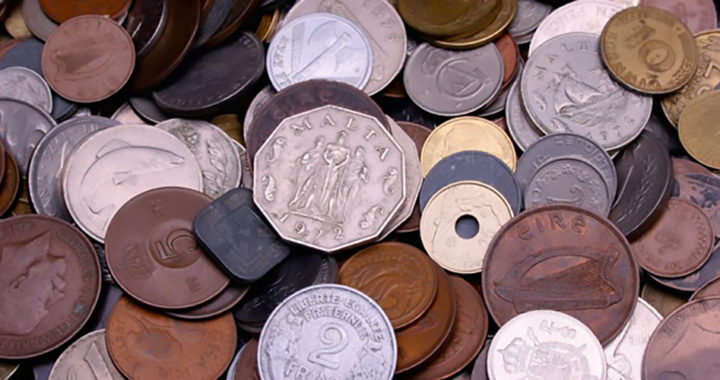The history of money also parallels the history of human civilization. It would be impossible to embrace modernity without embracing they monetary system fully because the use of money pervades across critical facets of contemporary living. However, considering its origins, it is not product of modern society. this begs the questions: Who invented money? When did the use of money start? Where did money originate?
Exploring the Origin and History of Money
People from ancient times were already implementing loose systems of ascribing value to a particular object. They used these systems in trades or exchanges and in guaranteeing debt obligations. Modern societies later adopted a legally structured system centered on using legal tenders and other instruments as mediums of payment.
Barters and Clay Tablets in Ancient Times
The origin and history of money date back to ancient times. To be specific, around 9000 BCE, people from ancient civilizations would barter goods they had in surplus for ones they lacked. Livestock like including cattle and produces like grains were the popular mediums of exchange. These commodities were the first money.
Writing emerged in the Near East around 8000 BCE as an economic necessity. It was specifically used as an instrument for recording agricultural outputs and other trade transactions. A more rigid writing system further developed in the ancient civilization of Mesopotamia by the end of 4000 BCE.
Harvard professor Niall Fergusson, in his book “The Ascent of Money: A Financial History of the World,” discussed the first appearance of what appeared to be an ancient form of a banking system in Babylonia about 4000 BCE. Archeological excavations revealed clay tablets bearing inscriptions of official records of debts.
The tables listed payable amounts expressed in numbers of grains or barleys. These tablets were identical to modern legal tenders because they represented a set value. They were also the earliest forms of commodity money because their values came from commodities they represent.
Commodity money replaced bartering. Barter trade has always been considered an inefficient mode of exchange because it requires a double coincidence of wants where both parties must have something the other wants at that exact moment. These goods and commodities may not always be available due to production limitations.
Cowrie Shells in China and Metal Coins
Cowry shells obtained from islands in the Indian Ocean became the official medium of payment and an an accepted form of commodity money in China about 1500 BCE. Authors Gerry Bailey and Felicia Law noted that these shells became so important that they later became the inspiration behind the Chinese character for money.
The Chinese also used miniature bronze tools like spades and knives as money around 1000 to 200 BCE This was followed by round metal coins from 600 to 300 BCE. Other ancient civilizations across the world during this time also used valuable items as a form of currency.
People in Lydia, a kingdom in Asia Minor or modern-day Turkey under King Alyattes, invented crude coins in 560 BCE. They also produced and used separate gold and silver coins. Each coin was stamped with a mark to certify its weight and value. This ushered in the emergence of the Lydian currency and the first standardized currency.
The use of coins also spread in Greece around 600 to 570 BCE. Macedonian King Alexander the Great fixed the ratio of silver to gold as ten to one around 336 to 323 BCE. Granaries in Egypt became banks. Alexandria hosted the central bank of Macedonia. This setup lasted from 330 BCE to 30 BCE.
Other societies soon adopted their respective currencies. Rome, for example, minted and circulated silver coins beginning in 269 BCE. Britons were using swords as a currency around 54 to 30 BCE according to Julius Caesar. These developments highlights the fact that currency is a more efficient means of exchange than barter.
Paper Money, Cards, and Digital Payments
The Song Dynasty in China introduced and used the first paper money in 910. Marco Polo, based from what he learned in China, later introduced form of currency in Europe. Gold coins was still popular. It was only in 1661 when Sweden printed its first banknotes. The use of paper money marked a turning point in the history of money.
One of the main reasons money was eventually accepted is that the supply of and access to precious metals like gold and silver was often limited. Paper money can be mass produced. This also allowed governments to regulate its production and circulation through their central banks.
The arrival of the digital age enabled the emergence and adoption of cashless transaction. Western Union launched the first electronic money transfer via telegram in 1860. American banker John C. Biggins later invented the charge-it card in 1946 while working at the Flatbush National Bank. This was the forerunner of the credit card.
Cashless and digital payments became more popular at the dawn of the new millennium due to the electronic commerce, mobile and Internet banking, and smart communication devices. Technology has fundamentally become a critical facilitator in advancing the modern history of money.
Paper currency through the fiat system remains prevalent. However, it is important to underscore the fact that digital records expressed most of the current value of money or the amount of money held by individuals or organizations. This means that the majority of money today exists in digital form and are represented by digital records.
Nevertheless, with the emergence of decentralized digital currencies called cryptocurrencies like Bitcoin and other coins and tokens beginning in 2009, the financial landscape dominated by centralized banking systems and paper currencies has now been deemed traditional.
